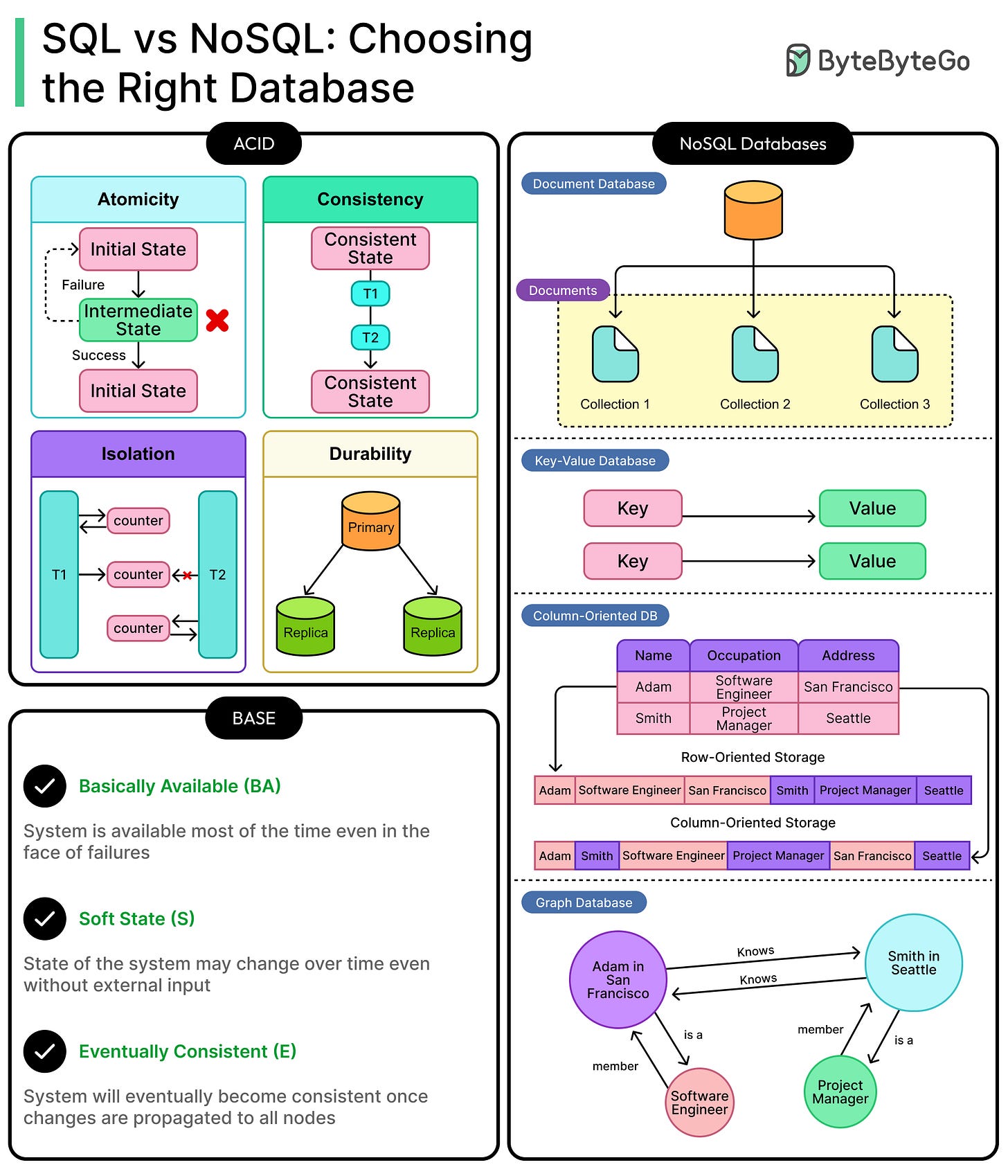Every modern application, from a ride-hailing service to an e-commerce platform, relies on data, and behind that data sits a database. Whether it's storing customer profiles, tracking inventory, or logging user actions, the database is more than just a storage engine. It's the core system that holds an application’s state together. When the database fails, everything else (APIs, front-end, business logic) comes tumbling down.
Therefore, choosing the right kind of database is critical, but it isn't a one-size-fits-all decision.
Relational databases, such as MySQL and PostgreSQL, have been the default for decades. They offer strong consistency, well-understood query languages, and battle-tested reliability. However, as systems scale and use cases diversify, traditional SQL starts to exhibit problems.
That’s where NoSQL enters the picture with a flexible schema design, horizontal scalability, and models tailored to specific access patterns. The promise is to scale fast and iterate freely. However, there are trade-offs in consistency, structure, and operations.
Then there’s a growing third category: NewSQL systems such as Google Spanner and CockroachDB. These attempt to bridge the gap by retaining SQL semantics and ACID guarantees, while scaling like NoSQL across regions and nodes. There are also specialized databases that push performance in specific directions. In-memory stores like Redis blur the line between cache and persistence. Search engines like Elasticsearch offer lightning-fast text search and analytics capabilities that relational databases were never built for.
The wrong database choice can throttle performance, slow down development, or break under scale. The right one can unlock speed, agility, and reliability.
In this article, we break down the core database paradigms, such as SQL and NoSQL, along with specialized database types and how developers can choose the appropriate database for their requirements.


